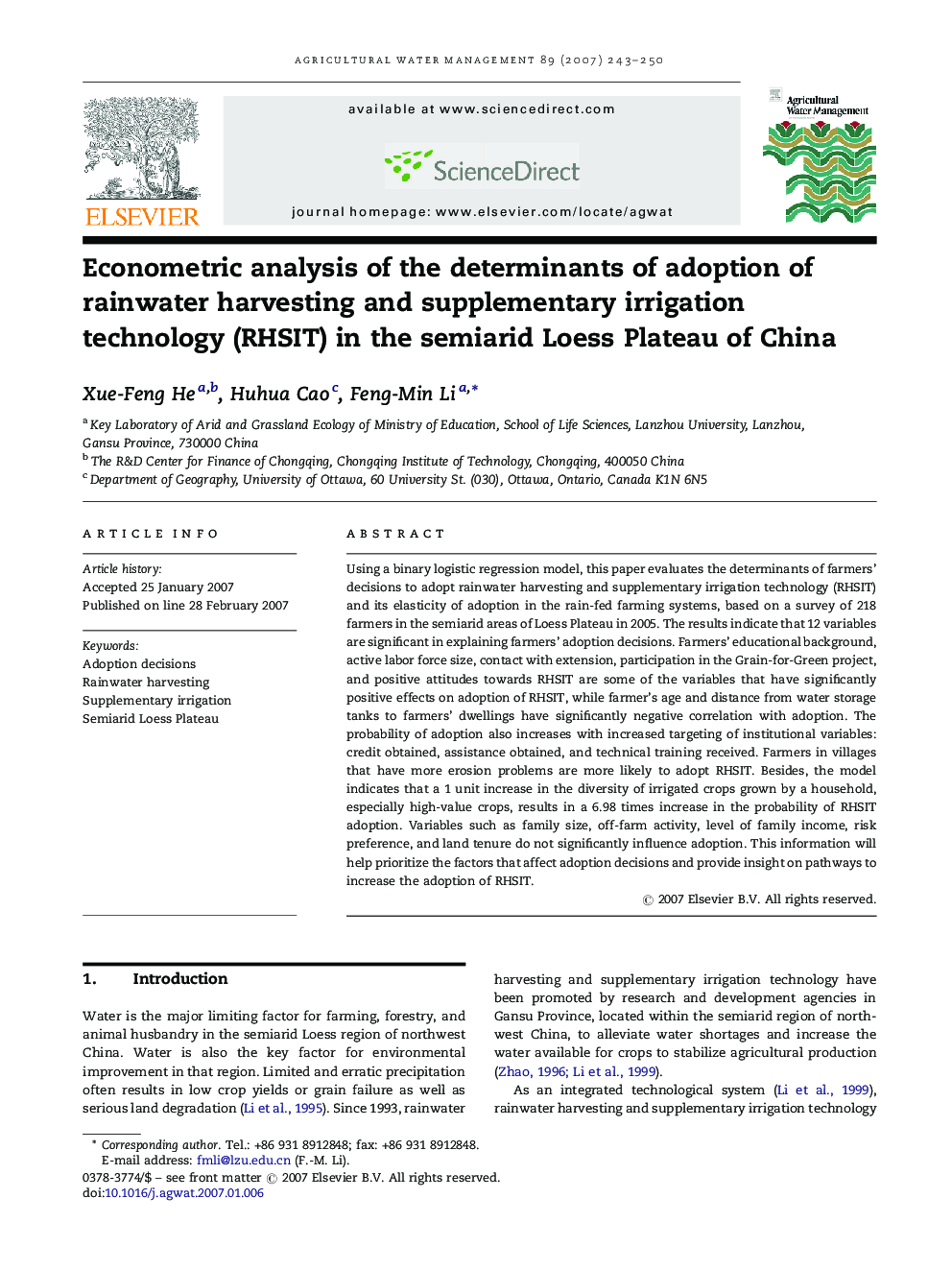| Article ID | Journal | Published Year | Pages | File Type |
|---|---|---|---|---|
| 4480425 | Agricultural Water Management | 2007 | 8 Pages |
Using a binary logistic regression model, this paper evaluates the determinants of farmers’ decisions to adopt rainwater harvesting and supplementary irrigation technology (RHSIT) and its elasticity of adoption in the rain-fed farming systems, based on a survey of 218 farmers in the semiarid areas of Loess Plateau in 2005. The results indicate that 12 variables are significant in explaining farmers’ adoption decisions. Farmers’ educational background, active labor force size, contact with extension, participation in the Grain-for-Green project, and positive attitudes towards RHSIT are some of the variables that have significantly positive effects on adoption of RHSIT, while farmer's age and distance from water storage tanks to farmers’ dwellings have significantly negative correlation with adoption. The probability of adoption also increases with increased targeting of institutional variables: credit obtained, assistance obtained, and technical training received. Farmers in villages that have more erosion problems are more likely to adopt RHSIT. Besides, the model indicates that a 1 unit increase in the diversity of irrigated crops grown by a household, especially high-value crops, results in a 6.98 times increase in the probability of RHSIT adoption. Variables such as family size, off-farm activity, level of family income, risk preference, and land tenure do not significantly influence adoption. This information will help prioritize the factors that affect adoption decisions and provide insight on pathways to increase the adoption of RHSIT.
